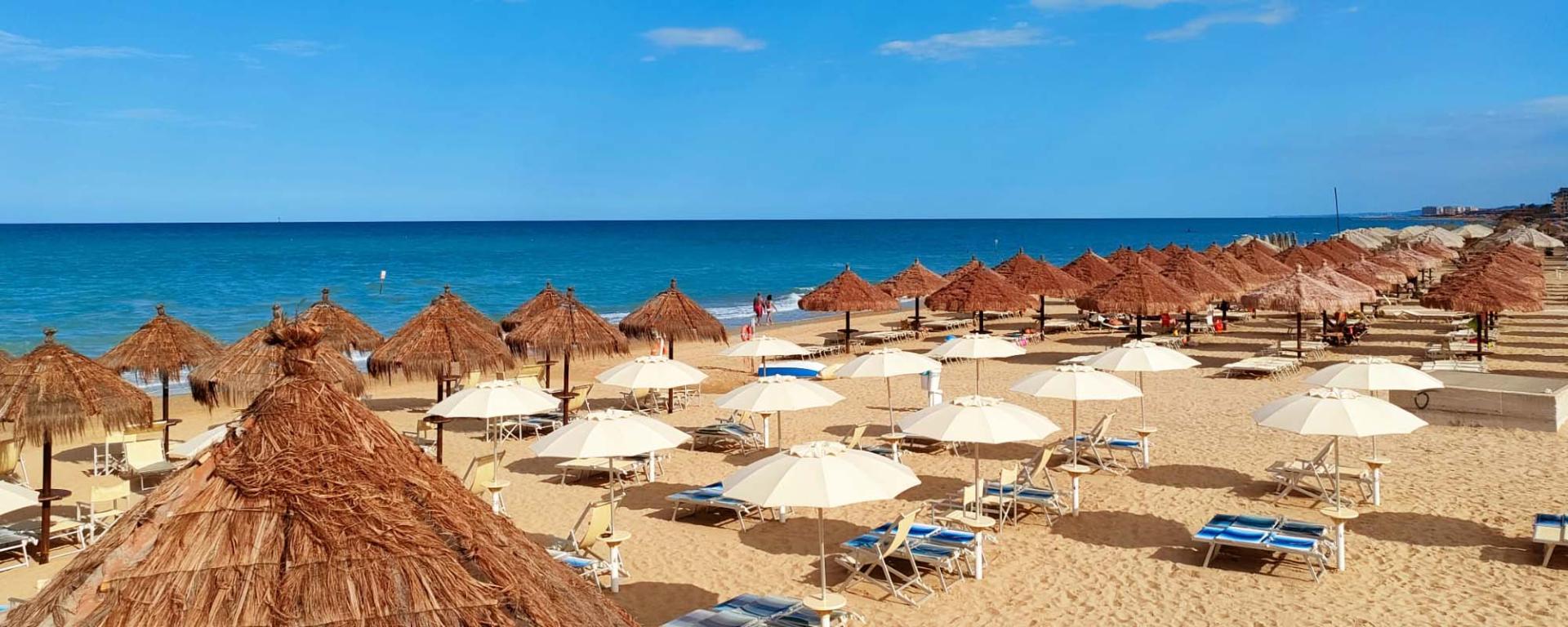
Church of Santa Maria Assunta
The Parish Church of Santa Maria Assunta in Silvi, with its majestic staircase, stands on a large square along the SS16 Adriatic state road.
The building project started in 1928 and involved the construction of a neo-Gothic style building. Unfortunately, the works were interrupted due to the outbreak of World War II. Only in 1948 the project was entrusted to the Pescara architect Pivi, who added the imposing and elegant marble staircase to the structure. The works resumed in 1950 and were completed three years later, when the church was consecrated and dedicated to Santa Maria Assunta on 14 May 1953.
The external shape of the church is imposing, with a visual reference to the three internal naves, where the central one is flanked by two smaller naves, separated by large round arches resting on round trefoil columns. The apse is accessible through a round arch.
The Church also has a beautiful bell tower which rises majestically on the left side of the building.
The interior of the church is characterized by a sober and elegant decoration, with vaulted ceilings and marble columns. The wonderful works of Father Giovanni Lerario, the "painter friar", are kept inside the Church of Santa Maria Assunta. Born in Rome in 1913, he entered the friars minor conventual in 1926, with priestly ordination in 1936.
After an intense activity of pastoral service in various areas of Italy, Father Lerario spent the last decades of his life in Silvi in the convent annexed to the Church of Santa Maria Assunta, from the early fifties until 1973, the year of his earthly departure. There are many works by Father Lerario kept not only throughout Italy: the echo of the friar's evocative iconographic poetics also resounded abroad, leading him to perform various works in England and Portugal. The work "Francis and the leper" is now exhibited in Detroit, America.
Father Lerario has lovingly bequeathed to the town of Silvi the splendid canvases that embellish the interior of the church of Santa Maria Assunta: "The Assumption of the Virgin in Heaven" (high altar), "St. Anthony preaching to the fish", “The Immaculate Conception”, “The Canticle of the Creatures”, “The Good Shepherd” and the “Prodigal Son”.
They are valuable works that testify to the great cultural and artistic stature of the "artist of God", as Father Lerario was called.

 IT
IT